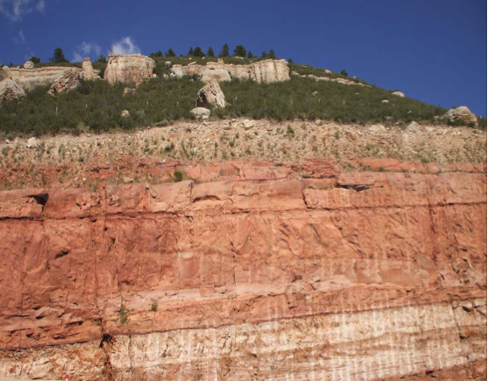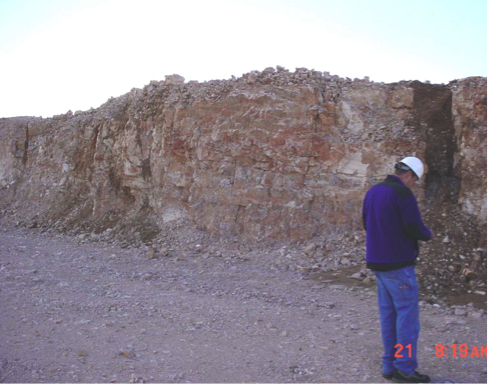Overview and Nomenclature
Aquifers are geologic formations in the subsurface that can store & transmit water (Figures 1 and 2). As we will see later in the section titles Basic Aquifer Properties, there are specific rock and soil properties that govern these two functions. Adequate storage requires that there be sufficient void space between particles, in fractures, or generated by compressing the aquifer under pressure, to provide usable quantities of water. Adequate transmission requires that the void spaces where water occurs be well enough connected that it can percolate or flow under either natural or pumping-driven conditions, at a rate that will support sustained use.


These definitions are intentionally vague because they depend on the scale of intended use. For example, an aquifer that provides water for a large city will need to sustain higher pumping rates at wells (on order of tens of thousands of gallons per minute) than one that provides for a single-family (a few to perhaps ten gallons per minute). For reference, Penn State University relies almost exclusively on groundwater pumping for its water supply at the University Park campus, with a total extraction of ~2.5 million gallons per day (about 1750 gallons per minute) distributed among several pumping well fields.
In contrast to an aquifer, an aquitard, often also termed a confining layer or aquiclude, is a geologic formation in the subsurface that does not transmit water effectively – and therefore acts as a barrier to groundwater flow. In general, aquifers are usually composed of sediments or sedimentary rocks with grain sizes larger than fine- to medium sand (>~125 µm diameter), or of fractured rock. Aquitards are typically composed of fine-grained sediments or sedimentary rocks or those in which the pore spaces have been filled by mineral cements (silts, siltstones, shales, clays, cemented sandstones, or unfractured limestones).
